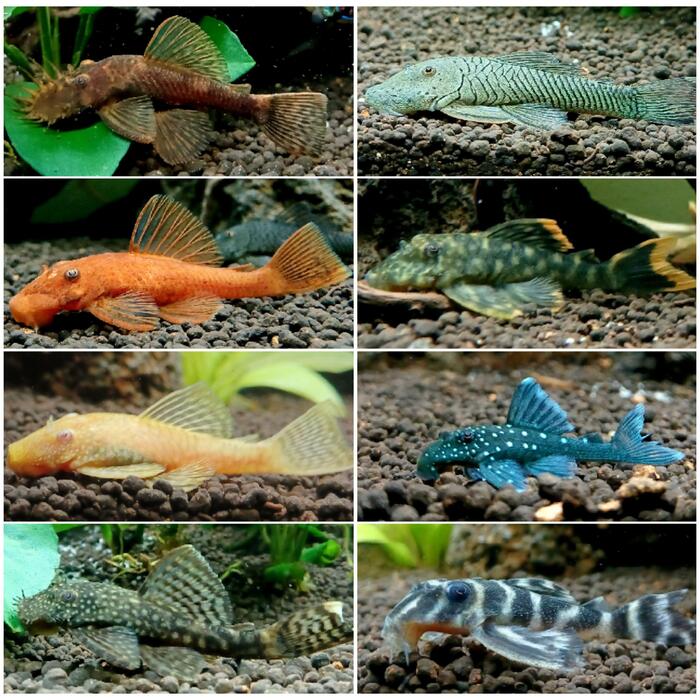When it comes to aquarium fish, plecos (also known as plecostomus or suckermouth catfish) are often considered essential for maintaining a clean tank. But one common question that arises is, do plecos eat fish poop? In this article, we’ll explore the dietary habits of plecos, their role in aquarium ecosystems, and provide insights on whether or not these fish really feed on fish waste. Let's dive into the fascinating world of plecos and their cleaning behavior.

Plecos are a popular choice for freshwater aquariums because they are often seen as natural tank cleaners. These fish belong to the family Loricariidae and are known for their armored bodies and unique suckermouths. They use these specialized mouths to scrape algae off surfaces, including rocks, decorations, and aquarium glass.
Their role in the aquarium ecosystem is crucial, especially in controlling algae growth. However, do plecos eat fish poop? It’s important to differentiate between their primary diet and any potential interest in fish waste.
Plecos are primarily herbivores, with a diet mostly composed of algae, plant matter, and detritus. In the wild, they feed on algae, fallen plant leaves, and decomposing organic matter found on the bottom of rivers and streams. In captivity, plecos should be provided with a balanced diet that mimics these natural food sources.
While plecos do spend a significant amount of time grazing on algae, they are not known to actively seek out or consume fish feces as a primary food source. Their diet mainly consists of:
Algae – Plecos are natural algae eaters and will graze on any algae they can find in the tank.
Vegetables – In captivity, plecos should be offered blanched vegetables such as zucchini, cucumber, and spinach.
Wood – Some species of plecos, particularly wood-eating plecos like the Royal Pleco, consume driftwood to obtain nutrients like cellulose.
High-Quality Pleco Food – Pellets and tablets designed for plecos can be used to supplement their diet.
While plecos are known for their cleaning abilities, the idea that they eat fish poop is largely a misconception. Plecos will sometimes nibble on waste material in the tank, but they do not actively seek out fish feces as a primary food source. Instead, they are more likely to consume decaying organic matter or algae that may be mixed with fish waste, but this is not a significant part of their diet.
Fish waste is generally not a nutritious food source for plecos. It’s mostly made up of undigested food, which offers little nutritional value to these fish. That being said, plecos will occasionally feed on detritus, which can include small particles of fish waste, but it is not their main dietary focus.
While plecos are not fish poop-eaters, they still contribute significantly to maintaining a clean tank. Here’s how:
Algae Control: One of the primary roles of plecos in an aquarium is controlling algae growth. By scraping algae off surfaces, plecos help prevent algae from overtaking the tank and creating unsightly green patches.
Detritus Eating: Plecos do help break down decaying plant matter, uneaten food, and detritus at the bottom of the tank, which can include small particles of fish waste. This process helps reduce the buildup of organic material and maintains water quality.
Aeration: As plecos move around the substrate, they help aerate the bottom of the tank, which can improve the overall health of the aquarium ecosystem.
While plecos do a great job of cleaning algae and eating detritus, it is important not to rely solely on them to maintain tank cleanliness. Plecos will not eat enough waste or perform a thorough cleaning of the tank. Here are some tips for maintaining a clean aquarium:
Regular Water Changes: Performing regular water changes is essential for keeping your aquarium clean and ensuring the health of all the inhabitants. This is especially important for managing fish waste and preventing the buildup of harmful substances in the water.
Proper Filtration: A good filtration system will help remove excess waste and maintain clear water. Make sure your filter is appropriately sized for the tank and can handle the waste produced by the fish.
Clean the Substrate: Use a gravel vacuum or substrate cleaner to remove debris from the bottom of the tank. Plecos may help with surface algae, but you will still need to manually clean the substrate.
Regular Monitoring: Keep an eye on your tank’s overall cleanliness, including water quality, plant health, and fish behavior. Plecos can assist in maintaining a cleaner tank, but their contributions should be part of a more comprehensive tank management plan.
In conclusion, while plecos are often thought of as natural tank cleaners, they do not primarily eat fish poop. Instead, they focus on algae and decaying organic matter in the tank. They are beneficial for keeping algae under control and contributing to the breakdown of detritus, but they are not a substitute for regular tank maintenance, including water changes and substrate cleaning. If you're looking to keep your tank in top shape, make sure to combine plecos with a solid cleaning routine to maintain optimal water quality and ensure the health of your fish and plants.
animal tags: Loricariidae
We created this article in conjunction with AI technology, then made sure it was fact-checked and edited by a Animals Top editor.